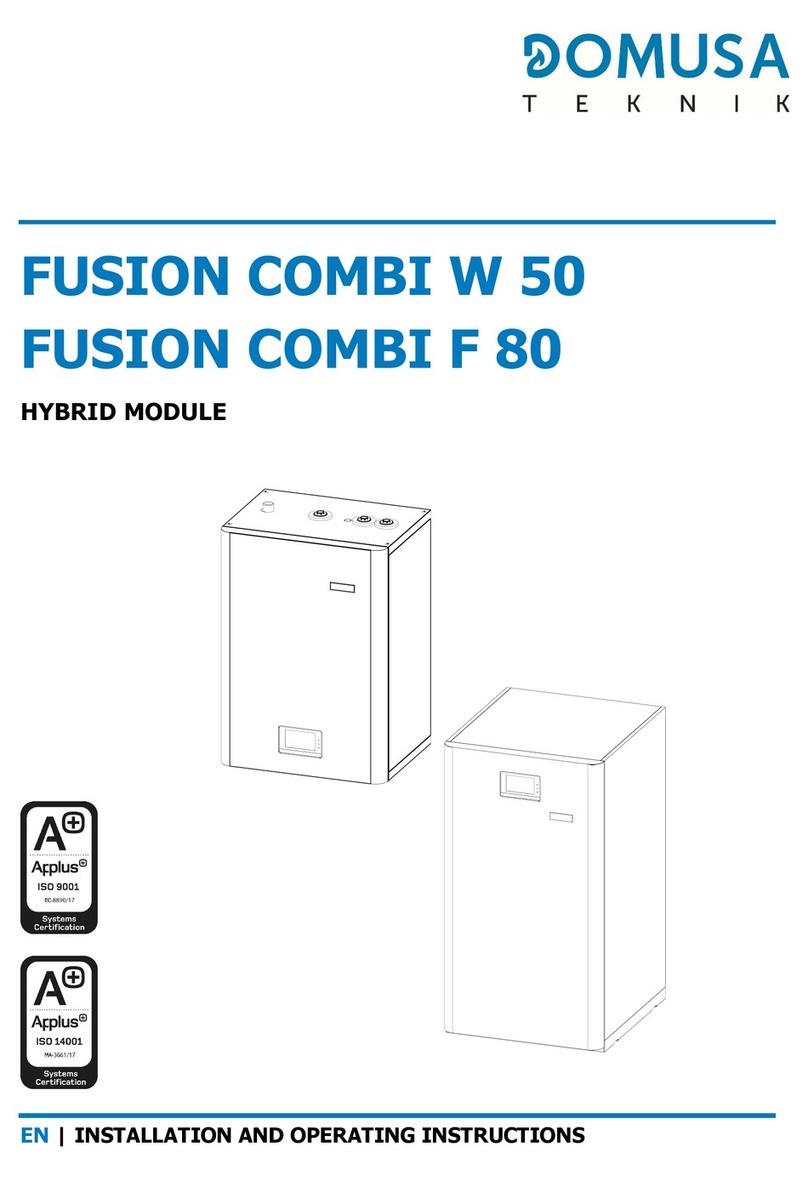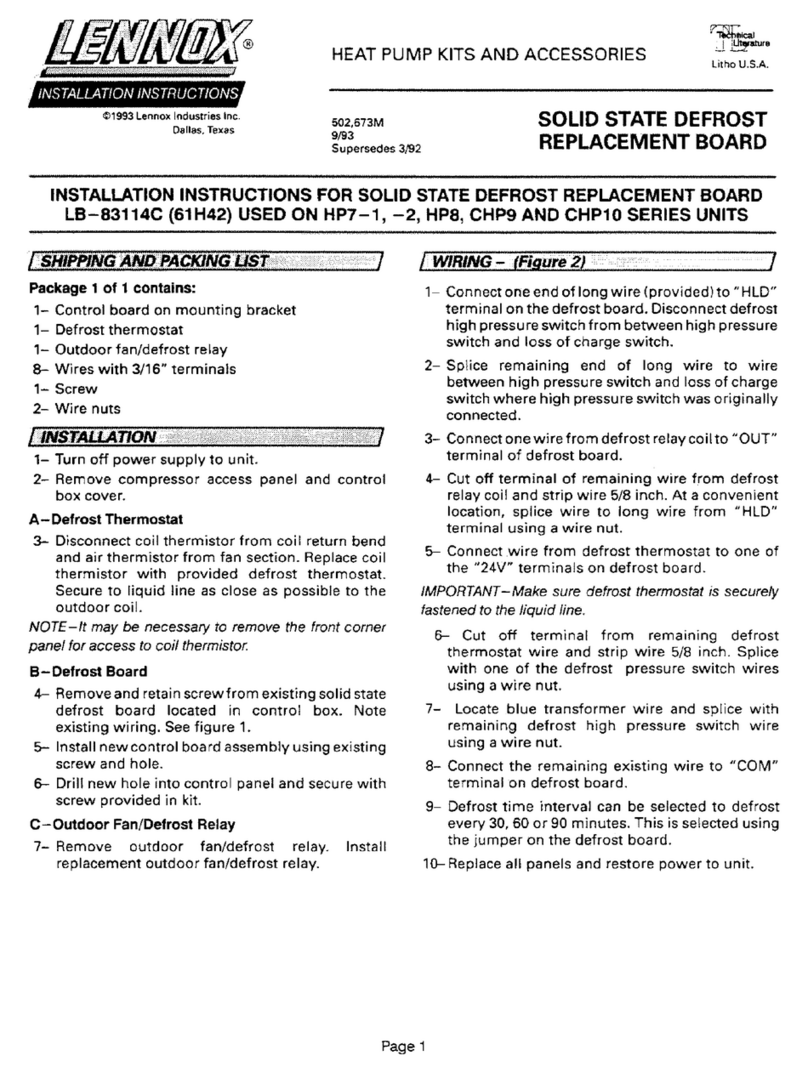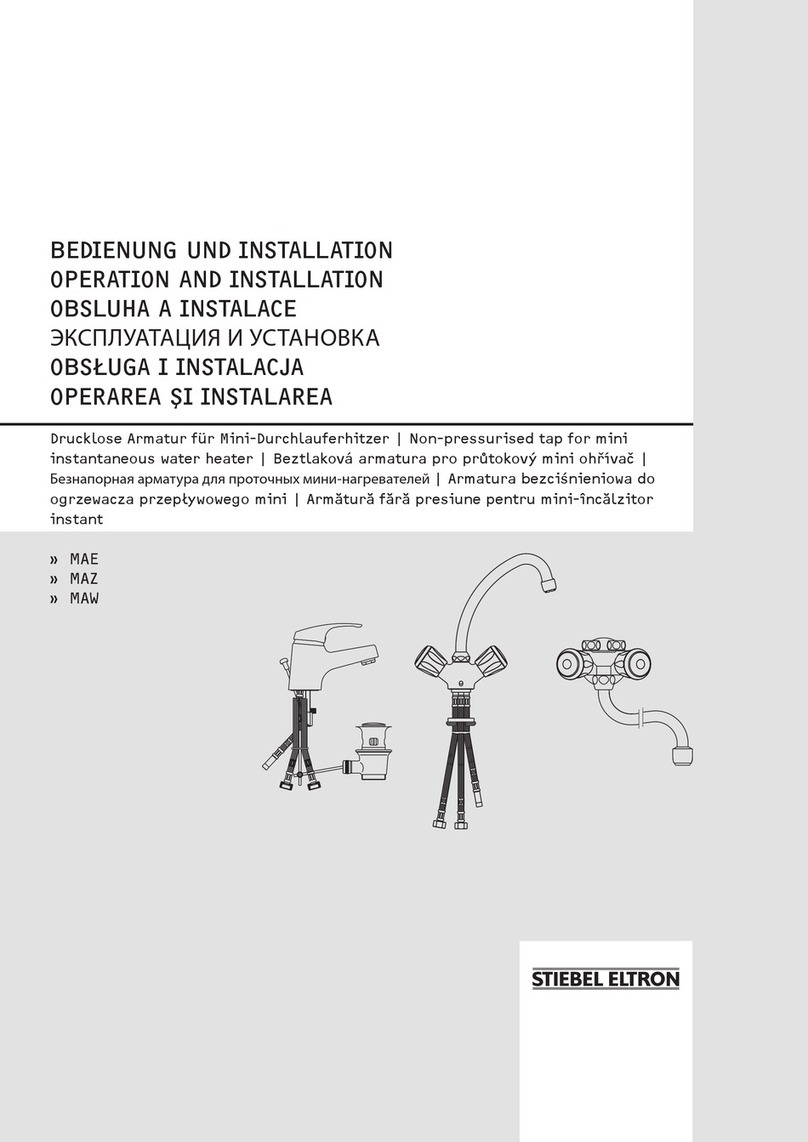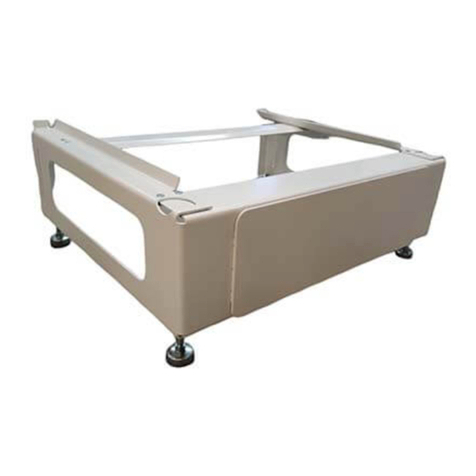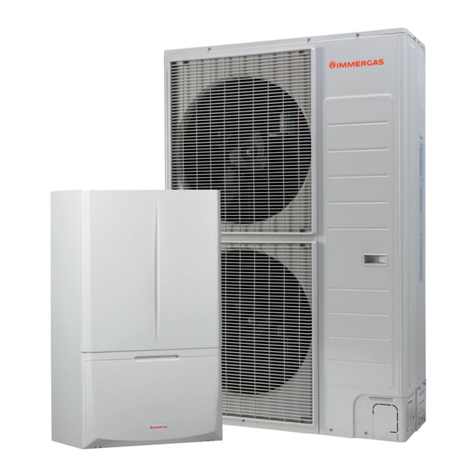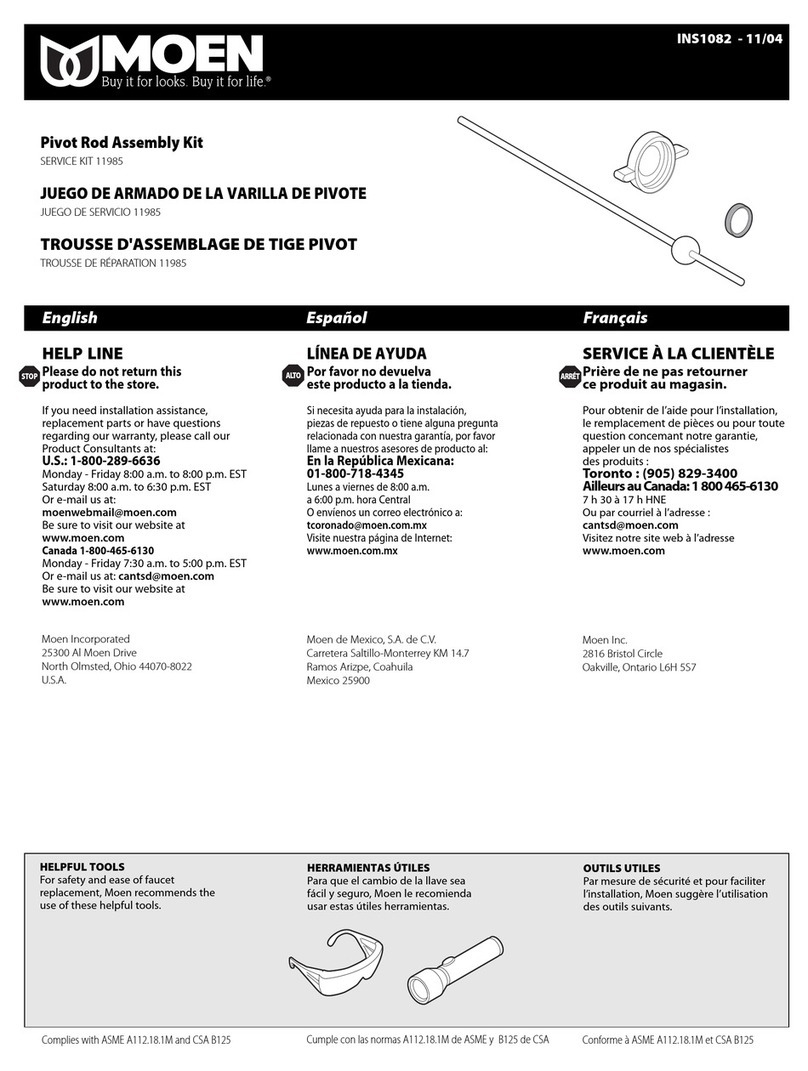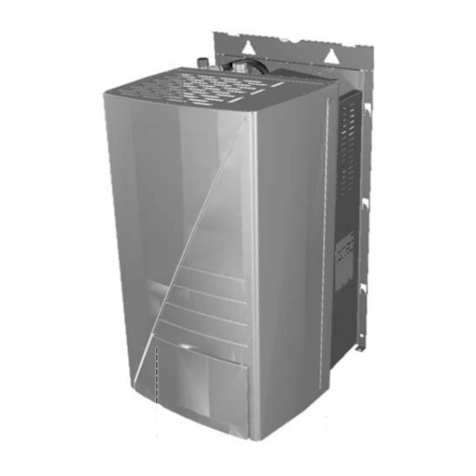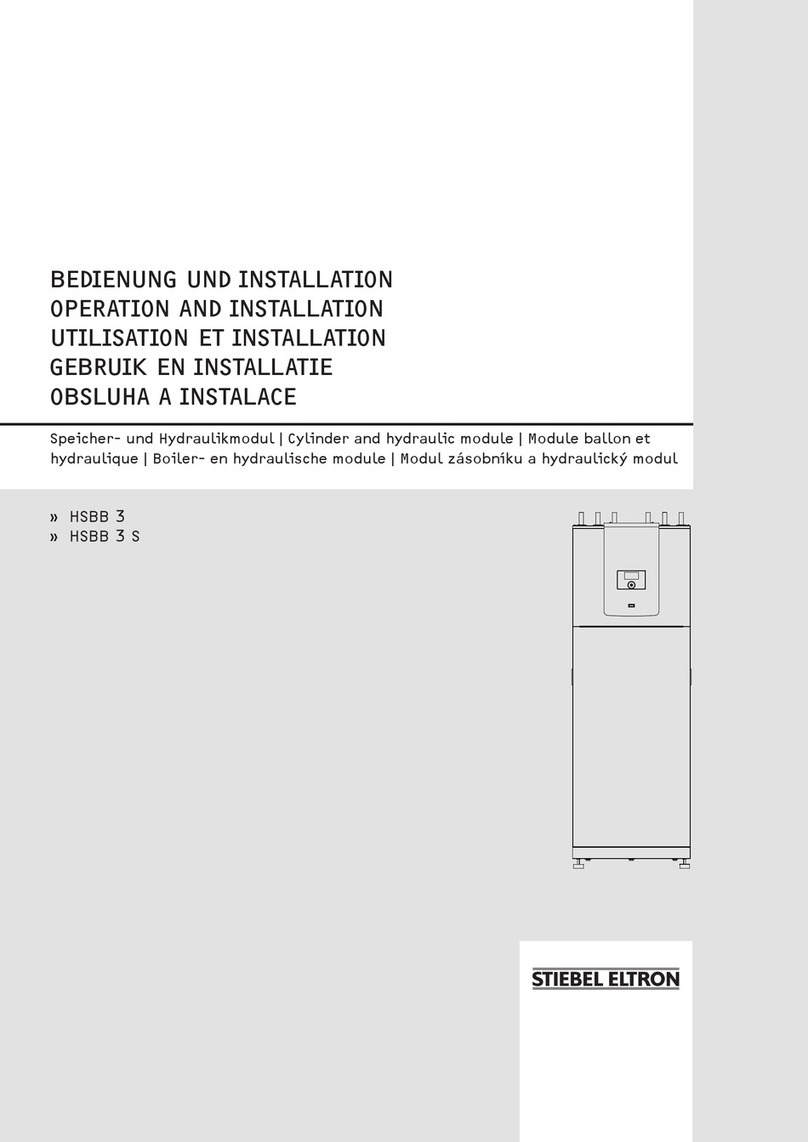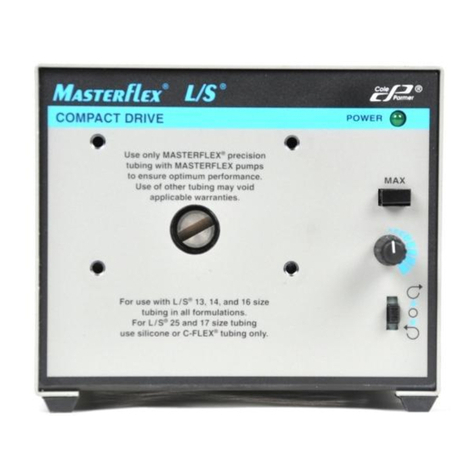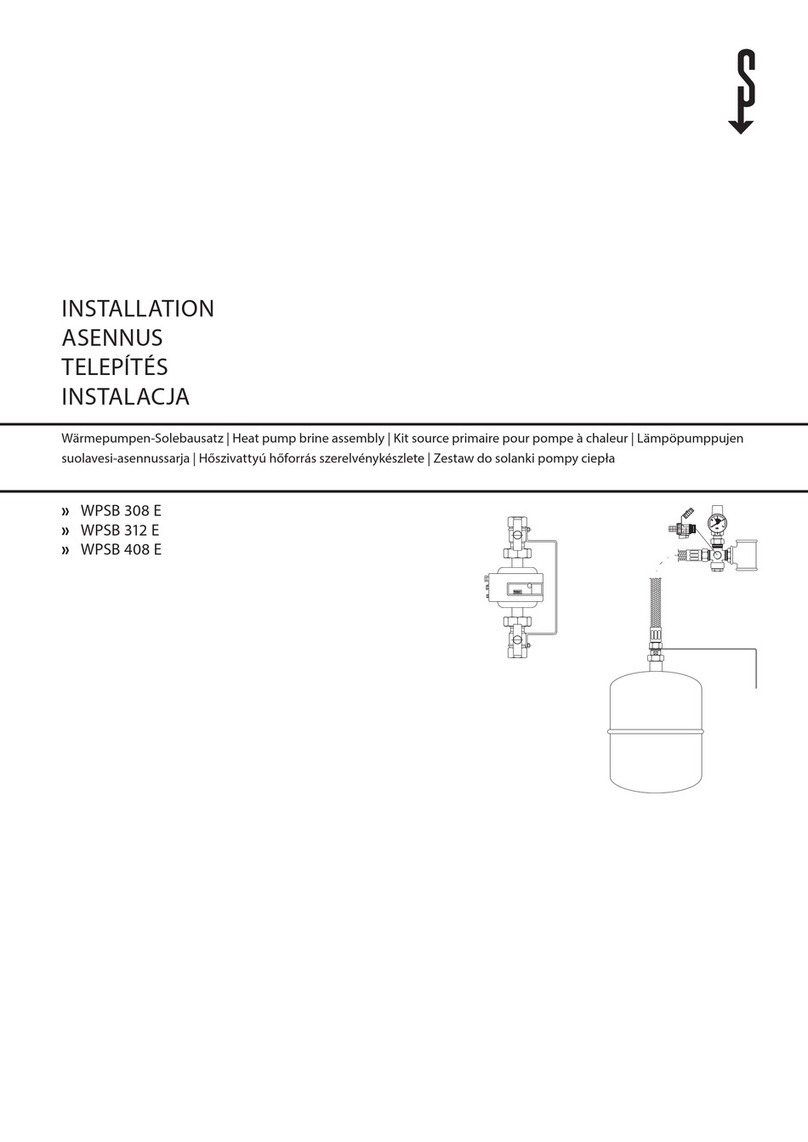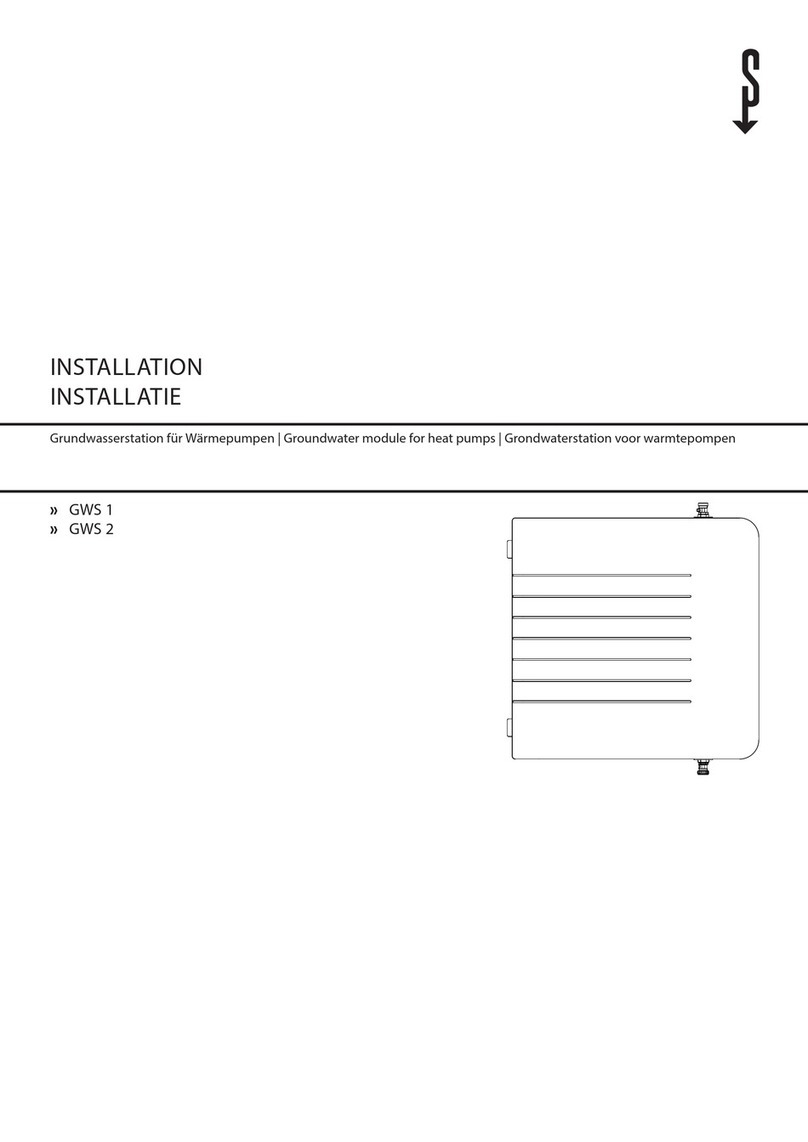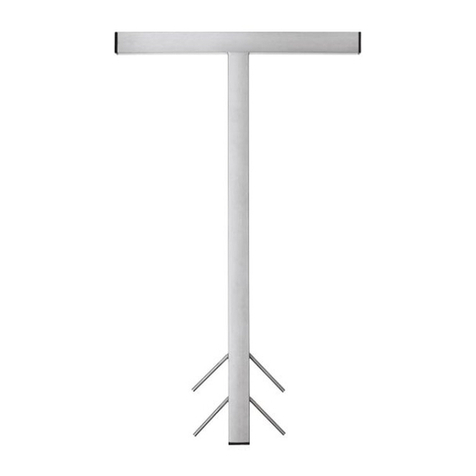
6
CARATTERISTICHE DI FUNZIONAMENTO
I ventilconvettori OMNIA UL C sono forniti pronti a funzionare in
configurazione standard, ma consentono all’installatore di ade-
guarli alle necessità specifiche dell’impianto con accessori dedicati
e personalizzando le funzioni agendo sui Dip-Switch interni (vedi
La risposta ai comandi è immediata, tranne casi particolari.
Tipologie d’impianto
I ventilconvettori della serie OMNIA UL sono progettati per impian-
ti a 2 tubi e configurati:
- senza valvola;
- con valvola a 2 vie oppure sonda acqua a valle della valvola;
- con valvola a 3 vie e sonda acqua a monte della valvola;
Ventilazione
La ventilazione a tre velocità può essere comandata sia manual-
mente con selettore in posizione V1, V2 e V3 (il ventilatore è uti-
lizzato con cicli di acceso-spento sulla velocità selezionata),
oppure automaticamente con selettore in posizione AUTO (la
velocità del ventilatore è gestita dal termostato in funzione delle
condizioni ambientali).
Per impianti con valvola (dip1 = ON) e installazione Sonda Acqua
a monte della valvola (dip 2 = ON) è possibile un ritardo (massi-
mo 2’40”) tra accensione valvola ed abilitazione ventilatore
(preriscaldamento scambiatore).
La ventilazione è consentita solo con le alette aperte, è necessario
aprirle manualmente.
Cambio stagione
Il termostato cambia stagione automaticamente.
Il cambio stagione avviene in base alla temperatura dell’acqua rile-
vata nell’impianto.
In funzione delle settaggio dei Dip è possibile avere due modi di
cambio stagione dal lato acqua:
- Dip1 = OFF, Dip2 = OFF per il solo controllo della temperatura
minima/massima;
- Dip1 = ON, Dip2 = ON per il controllo della temperatura mini-
ma/massima ed il preriscaldamento della batteria (ventilazione
ritardata fino ad un massimo di 2’40”).
Solo per impianti particolari con sonda acqua a valle oppure
valvola a 2 vie, il cambio stagione avviene dal lato aria, agendo
sul selettore di temperatura; in questo caso impostare Dip1 =
ON, Dip2 = OFF; questa impostazione permette di poter utilizzare
il ventilconvettore in impianti a 2 vie presistenti, ma è sconsiglia-
ta in quanto riduce la facilità d’uso del pannello comandi (la
visualizzazione dello stato di funzionamento Caldo/Freddo
dipende dalla temperatura selezionata e dalla temperatura
dell’aria nell’ambiente.
Controlli sulla temperatura dell’acqua
Il termostato abilita la ventilazione solamente se la temperatura
dell’acqua è idonea al modo Caldo o Freddo.
Le temperature di abilitazione sia a caldo che a freddo sono con-
figurabili per adattarsi alle condizioni di esecizio dell’impianto.
La soglia di abilitazione a caldo è selezionabile dal Dip.5, posizio-
ne OFF per Caldo normale (39°C) e ON per Caldo ridotto (35°C).
La soglia di abilitazione a freddo è selzionabile dal Dip.6, posizio-
ne OFF per Freddo normale (17°C) e ON per Freddo ridotto
(22°C).
Sul pannello comandi è segnalata la situazione in cui la temperatu-
ra dell’acqua non sia adeguata al modo di funzionamento imposta-
to, tramite il lampeggio alternato sul led C del colore fuxia con i
colori rosso o blu relativi al modo attivo; questa visualizzazione non
è attiva con Dip1 = ON, Dip2 = OFF.
Comando valvola
La valvola può essere controllata in due modalità, selezionabili
tramite il dip 3:
- ottimizzata: sfrutta la capacità del ventilconvettore a Caldo di
erogare calore anche con ventilazione spenta e a Freddo di
avere una ventilazione continua mantenendo il controllo della
temperatura ambiente tramite la valvola;
- normale: la valvola apre o chiude in corrispondenza dell’accen-
sione o spegnimento del ventilatore.
Correzione sonda
É possibile selezionare la correzione da applicare alla sonda
ambiente.
Frost Protection (protezione antigelo)
La protezione antigelo prevede di controllare che la temperatura
ambiente non scenda mai a valori di gelo, anche quando il ventil-
convettore è spento ed il selettore (A) è in OFF.
Nel caso in cui la temperatura scenda sotto gli 7°C il termostato
avvia il ventilconvettore nel funzionamento a caldo con set a 12°C e
ventilazione in AUTO, sempre che la temperatura dell’acqua lo con-
senta, che il ventilconvettore sia alimentato e che, per i modelli con
aletta manuale, l’aletta di mandata sia in posizione aperta.
Esce dal modo antigelo quando la temperatura supera i 9°C.
Modo Emergenza
In caso di avaria della sonda ambiente SA il termostato entra in
modalità Emergenza, indicata dal lampeggiare del led (D) giallo.
In questa condizione il pannello comandi si comporta nel modo
seguente:
- con selettore (A) in posizione OFF la valvola acqua è chiusa ed
il ventilatore spento.
- con selettore (A) in posizione AUTO, V1, V2 e V3 la valvola
acqua è sempre aperta ed il ventilatore esegue dei cicli di acce-
so - spento; in questa situazione la potenza erogata dal termina-
le viene comandata maualmente tramite il selettore (B): ruotan-
do verso destra la durata del ciclo di Acceso aumenta; ruotando
verso sinistra la durata diminuisce.
IMBALLO
I ventilconvettori vengono spediti con imballo standard costitui-
to da gusci di protezione e cartone.
prima di effettuare qualsiasi intervento, assicu-
rarsi che l’alimentazione elettrica sia disinserita.
i collegamenti elettrici, l’installazione dei ventil-
convettori e dei loro accessori devono essere eseguiti solo da
soggetti in possesso dei requisiti tecnico-professionali di abili-
tazione all'installazione, alla trasformazione, all'ampliamento
e alla manutenzione degli impianti ed in grado di verificare gli
stessi ai fini della sicurezza e della funzionalità.
Il ventilconvettore deve essere installato in posizione tale da con-
sentire facilmente la manutenzione ordinaria (pulizia del filtro) e
straordinaria, nonchè l’accesso alle valvole di sfiato dell’aria e
scarico poste sulla fiancata del telaio (lato attacchi); si raccoman-
da inoltre di non installare il ventilconvettore sopra oggetti che
temono l’umidità in quanto in particolari condizioni si potrebbe-
ro verificare fenomeni di condensazione sulla struttura esterna
dell’apparecchio con possibilità di gocciolamento oppure guasti
agli impianti idraulico e di scarico condensa con conseguente
riversamento di liquidi.
Il luogo di montaggio deve essere scelto in modo che il limite di
temperatura ambiente massimo e minimo venga rispettato
0÷45°C (<85% U.R.).
Per installare l’unità procedere come segue:
a) Togliere il mantello svitando le viti sulla testata sotto gli spor-
telli.
b) Nella installazione a parete, si mantenga una distanza minima dal
pavimento di 80 mm. In caso di installazione a pavimento per
mezzo degli zoccoli, si faccia riferimento alle istruzioni a corredo
dell’accessorio.
c) La parete di supporto deve essere perfettamente piana, per il fis-
saggio usare 4 tasselli ad espansione con caratteristiche adegua-
te al tipo di parete (non forniti).
d)Effettuare i collegamenti idraulici, per facilitare lo sfiato
dell’aria dalla batteria, si consiglia di collegare il tubo di usci-
ta dell’acqua al raccordo posizionato più in alto, l’eventuale
inversione non pregiudica il normale funzionamento dell’u-
nità.
La posizione e il diametro degli attacchi idraulici sono riportati
nei dati dimensionali.
Si consiglia di isolare adeguatamente le tubazioni dell’acqua o di
installare l’apposita bacinella ausiliaria di raccolta condensa,
disponibile come accessorio, per evitare gocciolamenti durante
il funzionamento in raffreddamento.
utensile il diaframma della bacinella (se presente) nel lato

